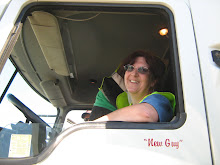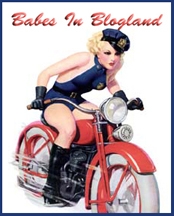 The trip to Castlegar had been driven mainly in the dark. We had been chatting about what a shame it was that driving at night meant we couldn’t see the view. We felt sure the landscape we’d been driving through must have been spectacular and were sorry to have missed it.
The trip to Castlegar had been driven mainly in the dark. We had been chatting about what a shame it was that driving at night meant we couldn’t see the view. We felt sure the landscape we’d been driving through must have been spectacular and were sorry to have missed it.
On the trip from Castlegar to Vancouver, to collect the next load to bring back, via the main drag this time, to Toronto, we learned two very important lessons about the mountains. Firstly, the full set of mountain ranges between the Prairies and the coast is about 1,000 kms wide. If you miss a bit, it's ok, there will be some more. Secondly, driving at night is infinitely less scary, there’s only the road to be frightened of, not the sickening drop just next to it.
I began the drive from Vancouver. The coastal mountain range begins almost as soon as the city limits end. The road is a well made, four-lane highway, there is nothing narrow or scary about it at all. It climbs steeply and steadily on a gentle curve, it’s not a difficult drive. But. As Dave rightly predicted, the sheer scale of the upness to one side and the downness to the other make you feel like you are walking a tightrope over Niagara Falls. It’s necessary to switch off your peripheral vision, but scanning your surroundings as widely as possible is good trucking. I found a coping mechanism relatively soon (it was either that or stop in the middle of the road and lay down until the world stopped turning) the trick is to keep your eyes fixated on the mirrors when they are not on the road. Fortunately we have lots of mirrors.
 The ranges blended into one another; up one mountainside, brake check stop, down a grade (back to Dave’s not much more than 8%, piece of cake), up another, it became routine. Gradually I risked looking about a bit. When the upness is on your side of the road it’s exhilarating and brilliant. When the downness is on your side of the road, the knuckles get a little white, when the road reduces to one lane in each direction, the chewing gum becomes a vital accessory. This has upset me a little. I hate chewing gum. I hate people who chew gum. I can’t bear that little squelchy noise you can hear them making. I have maintained stoutly that under no circumstances would I ever become one of those people, but did secrete a packet in my belongings just in case the need arose for a coping mechanism of last resort. I now chew gum. But only, and I wish to make this abundantly clear in case you are already resolving never to sit next to me at a party, only when driving down a mountain in daylight.
The ranges blended into one another; up one mountainside, brake check stop, down a grade (back to Dave’s not much more than 8%, piece of cake), up another, it became routine. Gradually I risked looking about a bit. When the upness is on your side of the road it’s exhilarating and brilliant. When the downness is on your side of the road, the knuckles get a little white, when the road reduces to one lane in each direction, the chewing gum becomes a vital accessory. This has upset me a little. I hate chewing gum. I hate people who chew gum. I can’t bear that little squelchy noise you can hear them making. I have maintained stoutly that under no circumstances would I ever become one of those people, but did secrete a packet in my belongings just in case the need arose for a coping mechanism of last resort. I now chew gum. But only, and I wish to make this abundantly clear in case you are already resolving never to sit next to me at a party, only when driving down a mountain in daylight.
The weather held for us, a few slushy, foggy bits but nothing that required chaining up. We both managed some pretty scary ravines and saw some spectacular scenery. We’ve driven the Mountains in winter. Nothing will ever be that hard again.
And I’m back to the questions that began the week; the answers seem to be, ish, yes, not well, not sure, sort of and yes. Now I know you’re paying close attention in case there is a test later, but just in case that’s less than illuminating I’ll take a self-indulgent opportunity to examine how the new career is panning out before a short break for a holiday in England.
Am I getting any stronger? Ish does seem the closest, I had expected some heavy physical work and knew that my lack of bodyweight and upper body strength might cause problems, but the winding up and down of landing gear and the messing about with cables only happens every few days. I am developing ways to manage better and generally, in extremis, someone will help out, in return for a bit of banter, a hand with some paperwork or possibly a coffee. The unforeseen trouble has been the sheer toll that the working hours take, added to the constantly changing shifts, which makes it impossible to keep to a sensible sleep schedule. Permanently exhausted and sleep-starved is not a healthy way to be. Team driven trucks are expected to keep rolling about 20 hours in each 24 and team driving is mandatory for the first six months. I am hoping to survive that long, especially as the answer to the next question...is it getting any easier to sleep? is a fairly unequivocal yes. It’s not good sleep yet but it’s better than it was.
I then asked the world how my night vision was coming along and am disappointed to report ‘not well’ but have popped in to my optician to ask about new glasses; they will be free now my three months probation is up and the company benefits kick in. An easy one. Harder to fathom is...why do I lose half a stone on every run? Not sure but it’s still happening. By the last day before home I am considerably hampered by the need to use one hand to hold my trousers up. Much though I don’t mind losing weight from an aesthetic point of view, it doesn’t help with question one very much.
And how about the word ‘coping’? Sort of is actually beyond my expectations for this run; knackered but less so, stressed but less so, apprehensive but less so, a smidgeon of pride and happy to be able to report a yes to the last question...did I remember to find the camera? But then you knew that. Because there are pictures.









